These thin and delicately crispy Florentine cookies are made with pistachios for a unique nutty flavor, and finished with a thin layer of white or dark chocolate (or a mix of both) and a sprinkle of dried rose petals (fancy!)
Florentines, also called lace cookies, are ultra thin and crispy cookies with flavors of nutty toffee and caramel and a hint of orange zest. This green-tinted pistachio version also features a drizzle of chocolate and pink rose petals for a gorgeous finish.
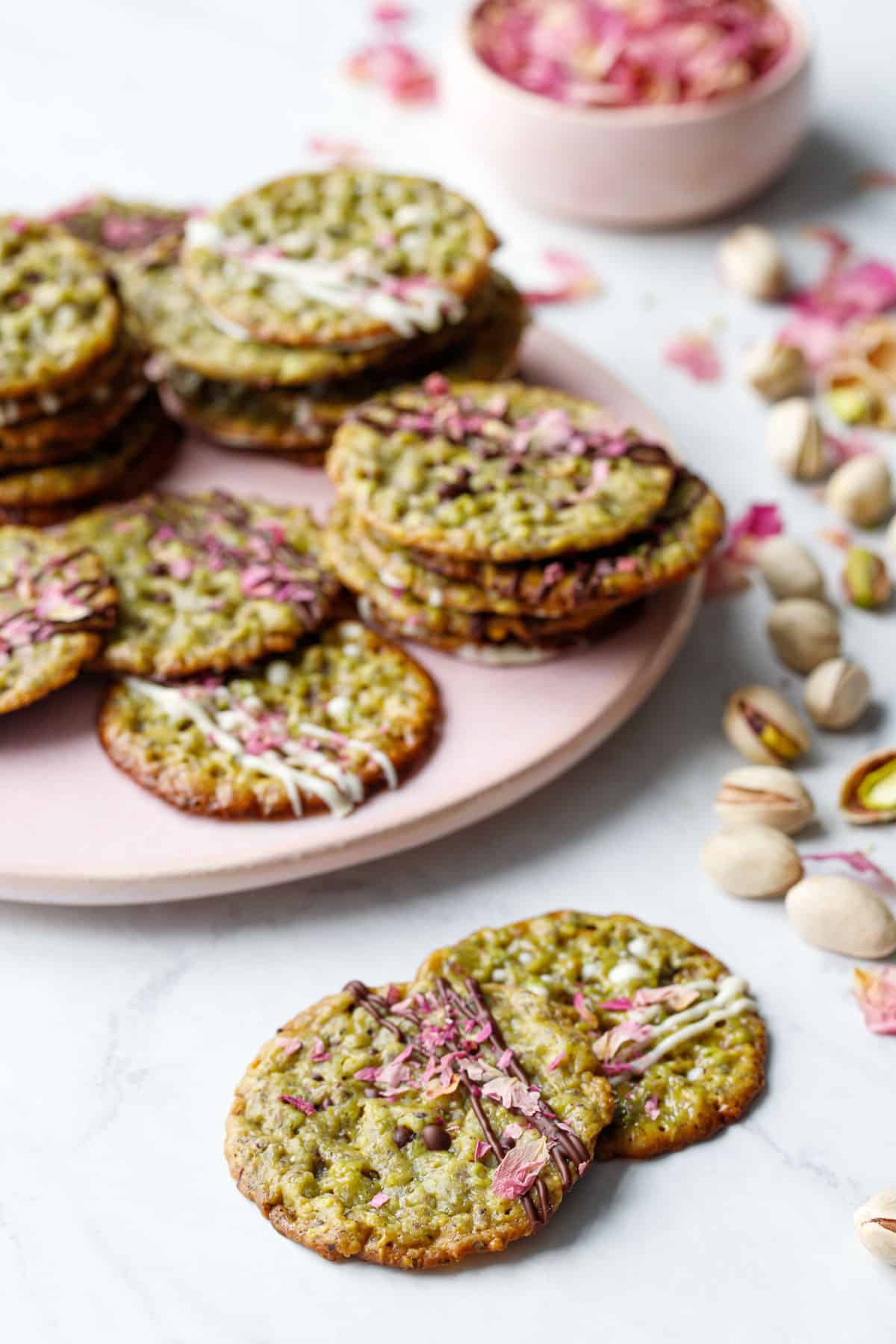
Pistachio is having a moment.
Or maybe I’m having a moment with pistachio. Which is not a new development, I’ve been slightly obsessed for a few years now though I’ve been good about spacing out all the pistachio recipes a bit more dilligently (dare I say it’s my favorite nut? Sorry, almond, you’ve been usurped.)
Either way, I’ve got pistachio on my mind, and if you’ve followed me for any length of time you know that leads to a surfeit of recipes featuring my current obsession. What’s next? You’ll just have to wait and see!
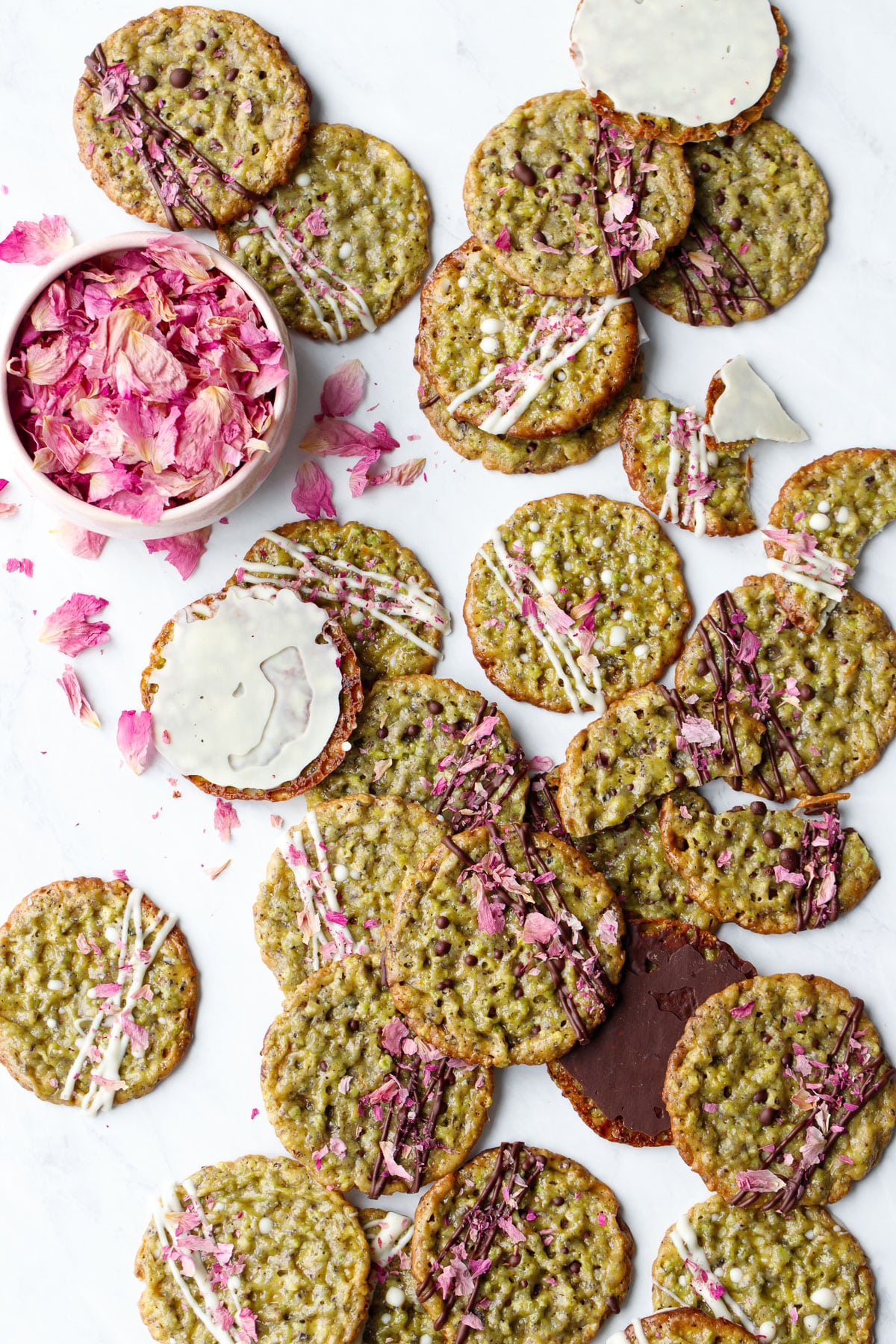
Florentine cookies, or Florentine biscuits to the Brits, are thin, crispy cookies made with a toffee-like base of butter, cream and sugar with nuts and sometimes dried fruits mixed in. Some iterations are so thin and delicate they are often aptly called lace cookies.
Florentine cookies are most often made with almonds and almond flour as a base, but here I’ve swapped in pistachios for a unique twist and gorgeous green color.
This version is slightly thicker than some other lace cookie recipes, but still delicately crispy with a pattern of small holes that allow the chocolate smeared on the bottom to peek through.
The flavor is most prominently caramel and toffee, with the nutty pistachio and hint of orange zest.
I topped my cookies with a decorative drizzle of chocolate and a sprinkle of dried rose petals. Rose and pistachio of course being a common pairing in many desserts around the world, particularly the middle East. The rose petals here serve mainly as decoration, as you really can’t taste them much in the final product. If you wanted a more prominent rose flavor, a dash of rose water would be a lovely addition!
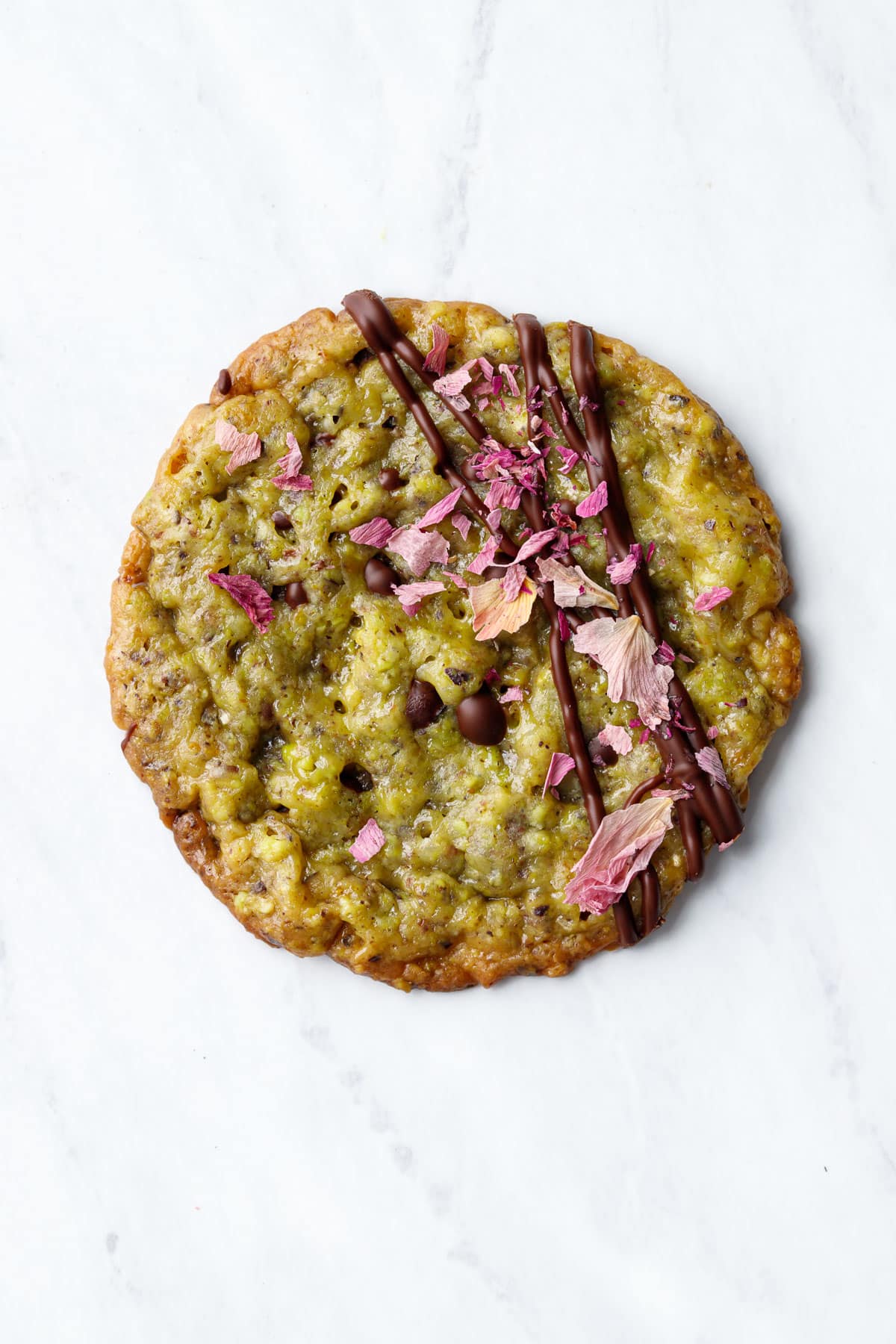
Why are they called Florentines?
The name is a bit of a puzzler, as it’s unlikely they actually originated in Florence, Italy. Instead, it’s more likely the cookies were created in France, the name an homage to the gold coins of Florence (aka Florins) that were the standard currency of Europe for around five hundred years. The golden cookies do look rather coin-like, now that you mention it. Although others theorize that the Austrians were in fact the creators of this worldly recipe. (So maybe, an Austrian pastry chef living in France created a cookie named after the Florentine currency? Sounds good to me.)
Also, don’t confuse this Florentine with that other kind of Florentine (namely savory dishes usually featuring spinach in a cream sauce), which, I’ll have you know, is also a French creation. As it happens we’re working on just such a recipe, for a chicken pasta florentine, which we’ll be sharing here in the next few weeks. Confusing, much? lol.
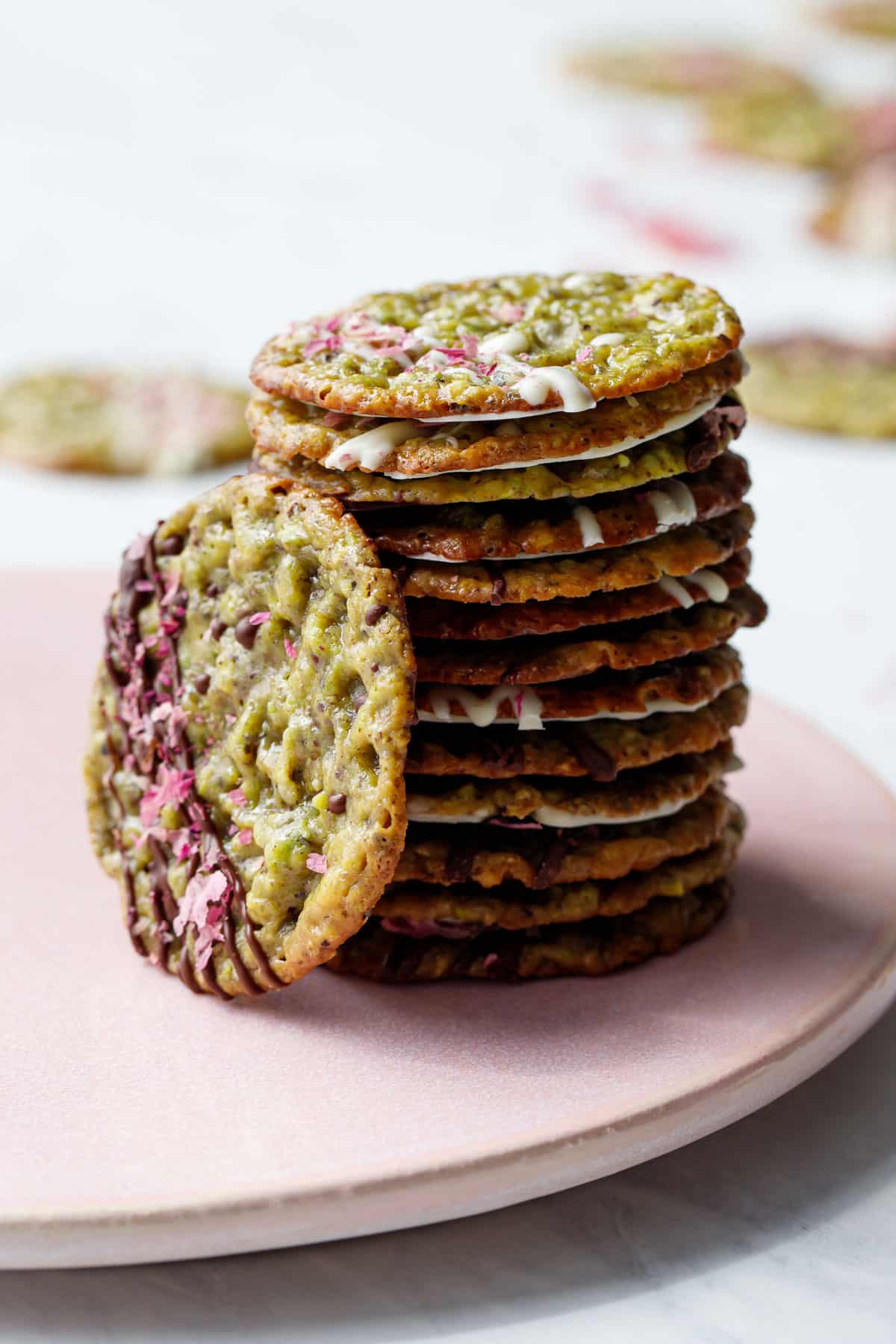
Seeing Green
The variety and quality of your pistachios will make a very big difference in the final color of the cookies.
I recommend buying raw in-shell pistachios and shelling them yourself; the nuts will be noticeably greener than if you bought pre-shelled. Do not use roasted or salted nuts for this recipe.
You can also buy pistachio flour and eliminate the food processor entirely (Brontedolci is the brand I used which has the greenest color of any flour I’ve been able to find here in the states). Look for Sicilian or Turkish pistachios which are generally greener in color than California varieties, though they will all work in this recipe. Granted, they are not cheap, but if you want that beautiful green hue they’re definitely worth it.
I used OliveNation pistachio extract to enhance the pistachio flavor, my old go-to brand appears to have been discontinued (boo hoo). This new one is more vanilla and orange-forward, compared to the old one which was more almondy. The added orange essence is perfect for this recipe since it compliments the orange zest already in the recipe beautifully.
If you don’t have pistachio extract, use 1/2 teaspoon vanilla and 1/4 teaspoon almond or orange extract instead, or leave it out entirely. I also think a dash of rose or orange blossom water would taste lovely here as well!
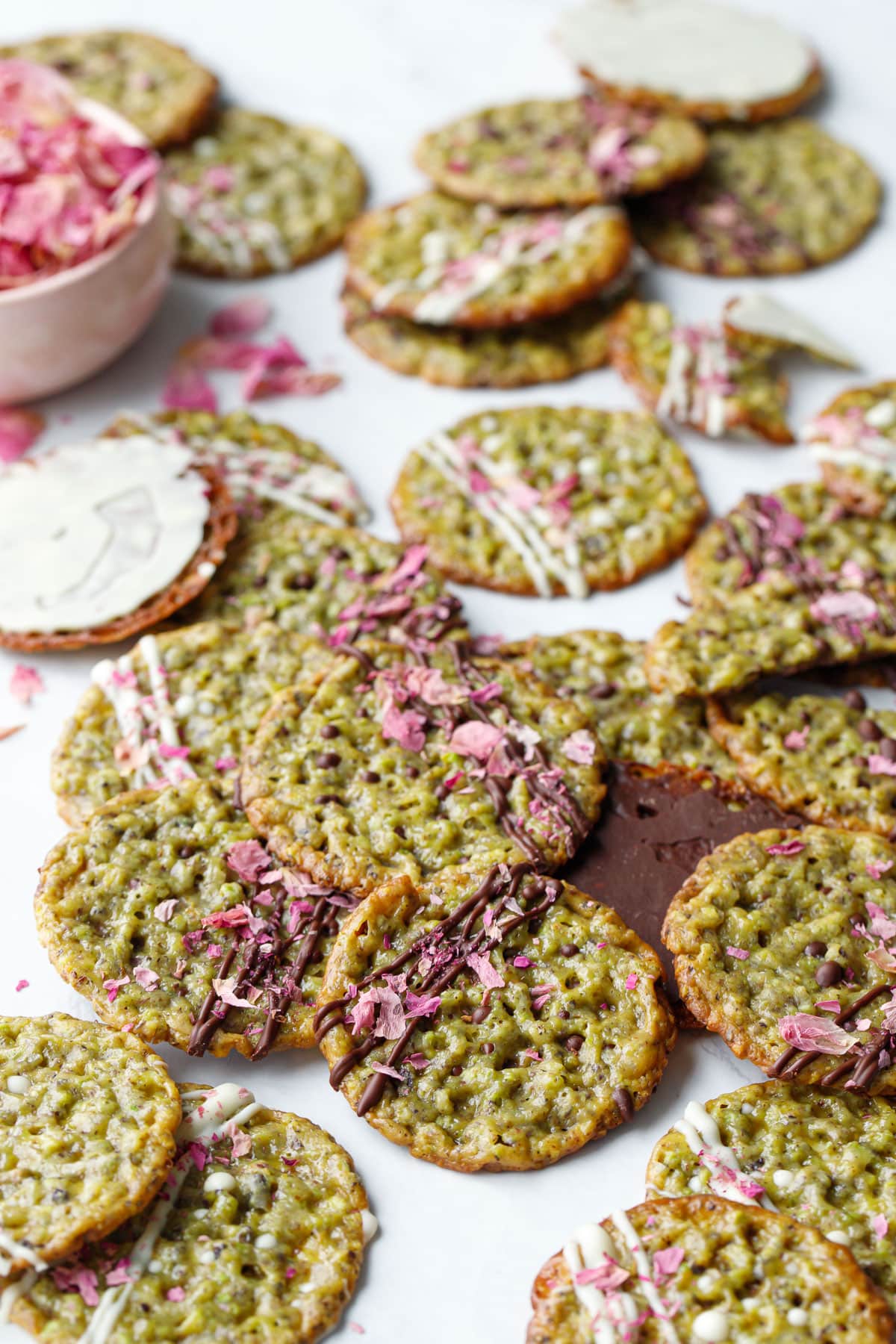
- Melt the butter, flour, and sugar in a saucepan. It will appear greasy and separated at first.
- But if you keep whisking, after about 3 minutes it will turn smooth and creamy.
- Add cream and ground pistachios or pistachio flour and whisk to combine.
- The batter will come together into a smooth paste (let’s ignore the fact it looks like pesto).
- Let the dough cool slightly to firm up, then scoop level teaspoonfuls of batter.
- It seems like a small amount of batter, but a level teaspoon full is all you need.
- Drop batter onto a parchment-lined cookie sheet, leaving plenty of space between them.
- After baking, you can swirl a round cookie cutter around the warm cookies to make them more evenly circular in shape.
- Once cooled, use an offset spatula to spread a thin layer of dark or white chocolate on the bottoms.
- To decorate, drizzle with a bit of dark or white chocolate on top, then sprinkle with dried rose petals.
Batter Up!
The batter for these cookies is quite a bit different than, say, a classic chocolate chip. It’s actually more like a nutty toffee than a cookie, made by cooking butter and sugar on the stovetop and then adding finely ground pistachios to that.
First melt the butter, then add the sugar, flour, and salt. You’ll notice it will be very greasy looking at first, but keep whisking, and after about 3 minutes it should start to emulsify and look creamy and smooth.
Whisk in the cream and ground pistachios, then remove from heat and add the extract and orange zest.
The batter needs to rest for 5 or 10 minutes, you’ll notice it firms up quite a bit as it cools which makes it easier to scoop out.
Use a round teaspoon measuring spoon, lightly greased if you find it helpful, to drop balls of batter onto the parchment-lined baking sheet (silicone mats work too though I find the cookies a bit greasier).
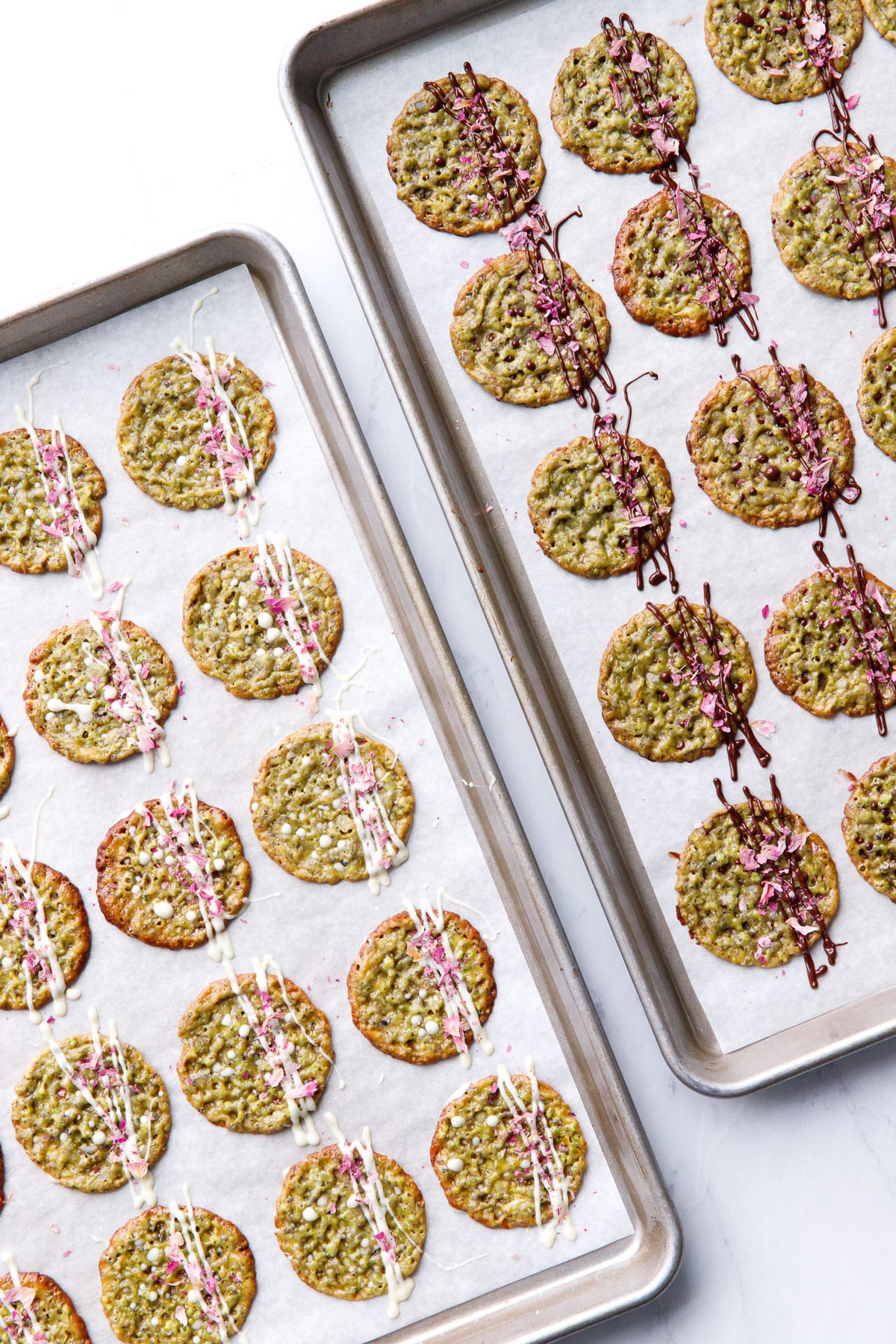
Bake it like you mean it
I recommend using a heavy weight, light colored baking sheet for these cookies. Thinner or darker cookie sheets will brown too quickly and you’ll end up with burn edges and chewy middles. Watch them carefully in the final few minutes as they bake, as they’ll go from underdone to burnt in seemingly no time.
I found that when I baked more cookies per sheet, the overall cook time increased significantly. With only 8 cookies on a sheet they were done in 6-7 minutes, but when I increased that to 10 cookies, they needed more like 9 minutes. Rotate your baking sheet partway through to ensure even cooking (this recipe is a great way to tell where you oven’s hot spots are, lol).
I recommend baking off a test batch with only 6 or 8 cookies first, to see just how much they’ll spread. If you think you have space, you can bake more cookies per sheet in subsequent batches.
Like most cookie recipes, they won’t come out of the oven in very even circles. But you can clean them up a bit by swirling a round cookie cutter around the still warm cookies, which helps to tuck in the uneven edges and make a more perfect circle shape. You have to work quickly though, with these cookies specifically you have about 30 seconds before they start to firm up.
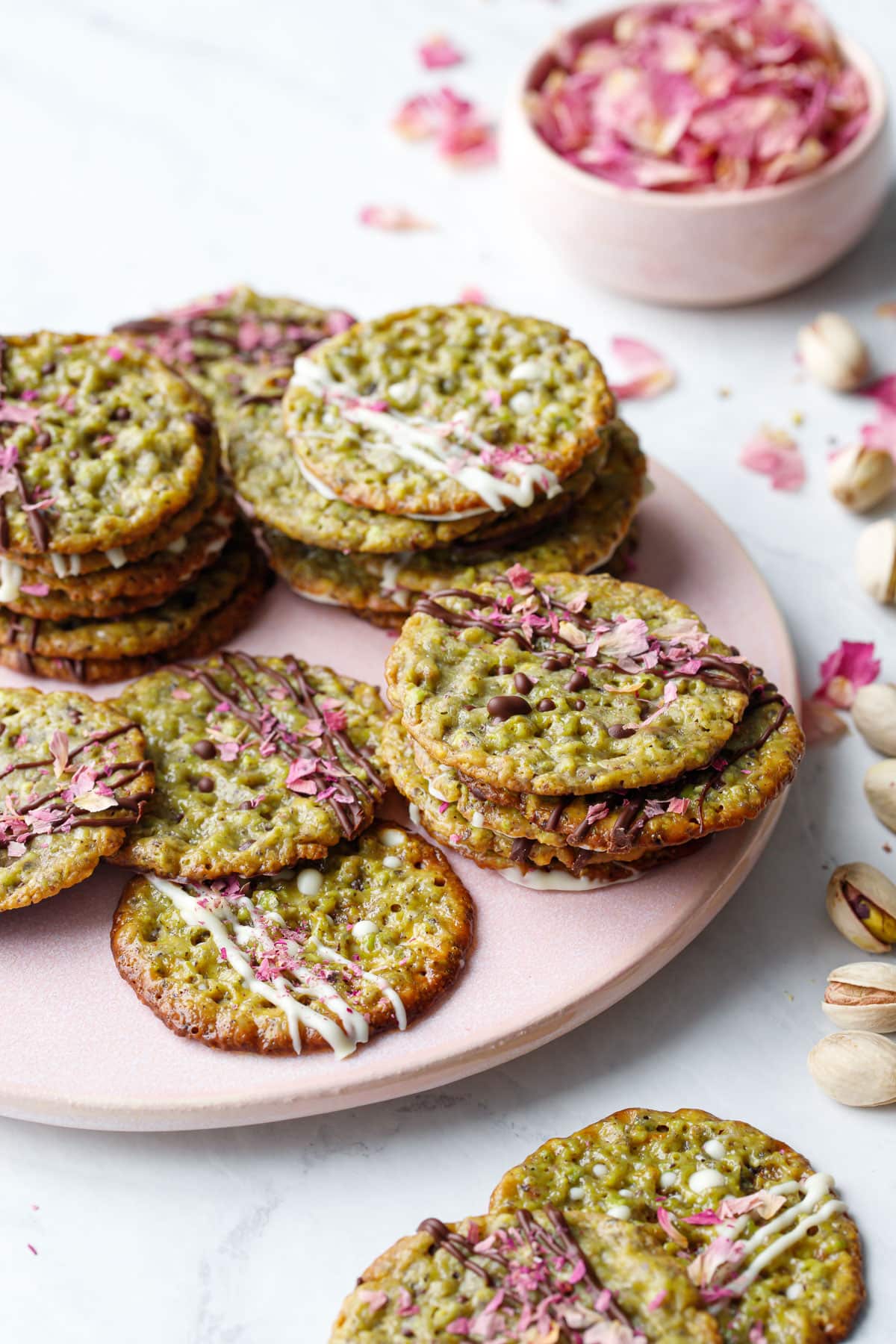
White or Dark?
The bottoms of the baked and cooled lace cookies are spread with a thin layer of chocolate, which sneaks through the lacy holes of the cookie. The chocolate also serves to add more structure to the cookie, making them not quite so delicately fragile.
You can use either white or dark chocolate. I couldn’t decide, so I did half of each (when in doubt, do both!)
As much as I love dark chocolate, I actually preferred the white chocolate version a tiny bit more, only because you could actually taste more of the pistachio flavor. Whereas the dark chocolate was lovely, but so intense and robust that it sort of takes over.
If you opt for half and half like I did, do the white chocolate first. That way, you can melt the dark chocolate using the same bowl, no washing necessary. Any tiny bits of white chocolate left in the bowl will blend in with the dark chocolate as it melts, unlike if you tried to do it the other way around. Hooray for fewer dishes!
Ideally the chocolate will be tempered beforehand, which will produce a snappy finish and allow the chocolate to remain firm at cool room temperature. I know tempering can be tricky, so don’t worry if it doesn’t work for you: simply keep the cookies refrigerated and you’ll be just fine!
To temper chocolate using the seed method, first setting aside about 1/5 of the chopped chocolate. Melt remaining chocolate in a double boiler over low heat or in a chocolate melting pot. When it is just melted, remove from heat and add seed chocolate, stirring until completely melted and temperature has come down to about 88-90 degrees (86 for white chocolate). This seed method will aid with crystal development, resulting in a layer of chocolate that stays hard at room temperature. It’s totally fine if you opt to skip the tempering (or if it doesn’t work for you); the cookies will just need to be refrigerated to stay firm.
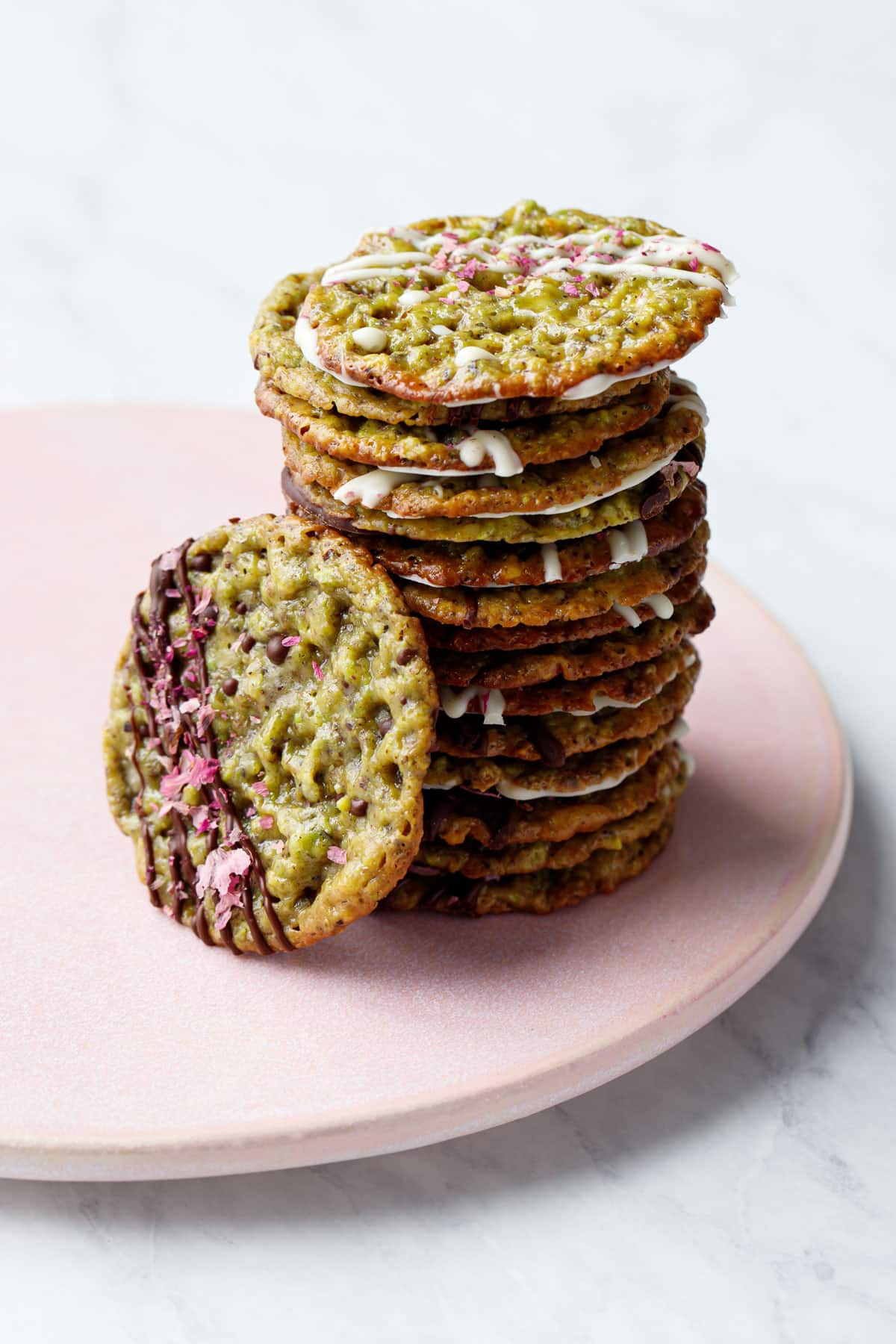
Serving & Storage
Unlike soft, chewy cookies that tend to dry out after mere days, these cookies are supposed to be crispy and thus have a surprisingly long shelf life. Store them at in an airtight container, with parchment paper between layers, and they’ll keep beautifully for up to a week at room temperature or 3 weeks in the fridge.
I did find that they softened slightly after a day or two, especially in more humid conditions, giving them a more chewy character as opposed to delicately crispy.
You can also freeze the cookies for up to a month, although they’ll be more chewy than crispy once the cookies are thawed, and chocolate layer may bloom a bit as a result of the condensation that occurs as they are thawed. You can opt to freeze the chocolate-free cookies too, and then add the chocolate before you plan to serve them (just be sure the cookies are fully thawed and at room temperature first to ensure no condensation gets in the chocolate).
If you want sturdier cookies (for shipping or transport), you can opt to make these sandwich cookies instead like I did with my original almond version. You’ll only need about 4 ounces of chocolate in this case. Just spread it on the bottoms of half of the cookies, then top with a second cookie to make a sandwich.
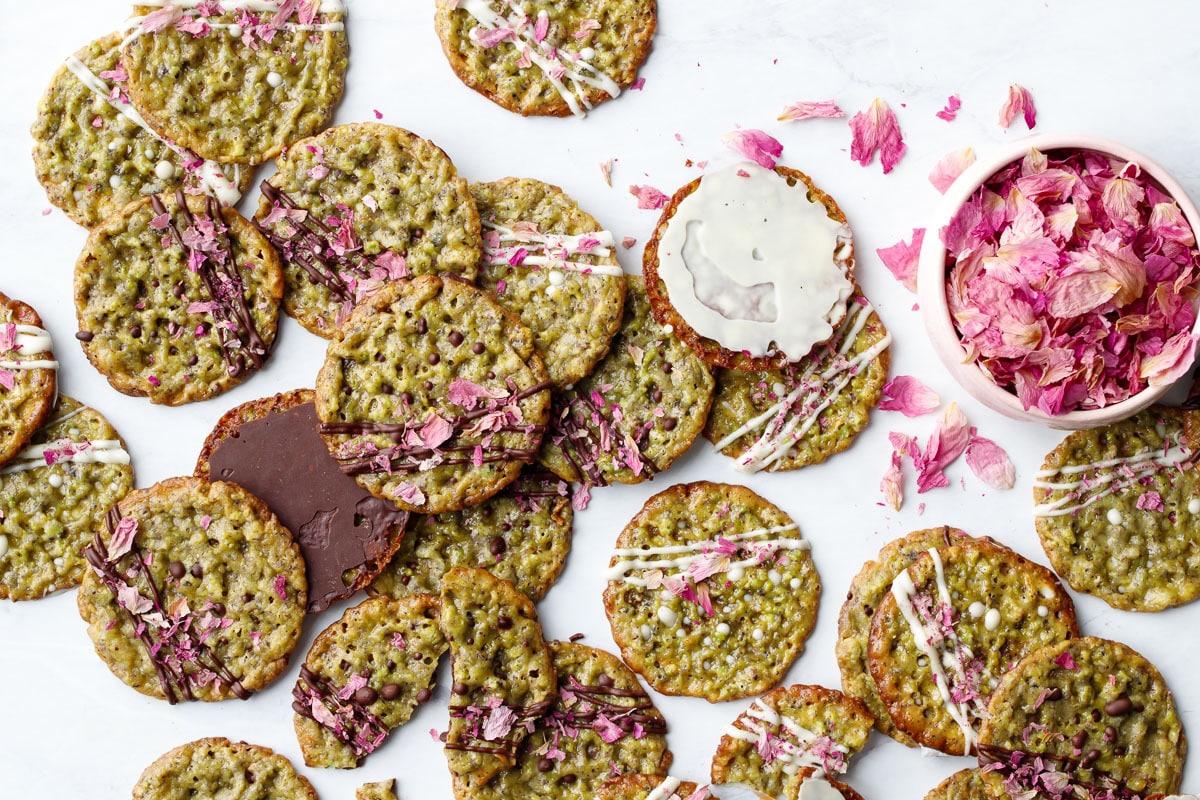
Pistachio Florentines
Ingredients
- 3.5 ounces / 100 g raw shelled pistachios or pistachio flour, about 1 cup ground
- 6 tablespoons / 85 g unsalted butter, cut into pieces
- ½ cup / 100 g granulated sugar
- 2 tablespoons / 16 g all purpose flour
- ½ teaspoon fine sea salt
- 2 tablespoons / 30 g heavy cream, at room temperature
- ½ teaspoon pistachio extract*
- 1 teaspoon finely grated orange zest
- 7 ounces / 200 g white and/or dark chocolate, finely chopped
- dried rose petals, for garnish
Instructions
- Preheat oven to 350 degrees F. Line two heavyweight baking sheets with parchment paper or silicone mats.
- Pulse pistachios in a food processor until very finely ground (but don't go so far as to make pistachio butter). You should have about 1 cup of ground pistachios.
- Melt butter in a medium skillet set over medium heat. Add sugar, flour, and salt and whisk until emulsified and mixture no longer appears separated, about 3 minutes.
- Whisk in cream, followed by pistachio flour and whisk until thick and smooth. Remove from heat and stir in orange zest and pistachio extract. Let cool slightly until it is thick enough to hold its shape.
- Drop batter by level teaspoonfuls onto prepared baking sheets, leaving at least 3 inches of space between cookies. (I recommend baking your first pan with only 6 or 8 cookies to see how much they spread, then you can decide if you can fit more or not).
- Bake for 6 to 9 minutes, rotating the baking sheets part-way through baking. The cookies are done when they are thin and bubbly and light golden brown around the edges. The more cookies there are on the same baking sheet the longer they will take to bake.
- Immediately after removing from the oven, swirl a round cookie cutter slightly larger than the diameter of the cookies for a more uniformly round shape.
- Let cool for 5 minutes on the cookie sheets until no longer flexible, then carefully transfer to a wire cooling rack with a thin spatula. Let baking sheet cool completely, then repeat with remaining batter. You can reuse parchment paper multiple times, just wipe of any excess grease between batches.
- Melt white and/or chocolate, first setting aside about 1/5 of chocolate to use as seed chocolate. Melt remaining chocolate in a double boiler over low heat or a chocolate melting pot. When it is just melted, remove from heat and add seed chocolate, stirring until completely melted and temperature has come down to about 88-90 degrees (86 for white chocolate). This seed method will aid with tempering the chocolate and producing a snappy finish. Un-tempered chocolate is fine, it'll just need to be refrigerated to stay firm.
- Using an offset spatula, spread a thin layer of melted chocolate on bottom of the cookies and place on parchment paper to set.
- Transfer any leftover chocolate to a piping bag fitted with a small round tip (or use a plastic bag with the tiniest bit of the corner cut off) and drizzle decorative lines over top of the cookies. Crumble up some dried rose petals and sprinkle on top of the chocolate before it sets completely.
- Store cookies in an airtight container (with parchment paper between layers) at room temperature for up to a week or in the refrigerator for up to 3 weeks.
Notes
- If you don't have pistachio extract, use 1/2 teaspoon vanilla and 1/4 teaspoon almond or orange extract instead.
- If you want to finish your cookies with a mix of both white and dark chocolate, you'll need about 100g of each. Melt the white chocolate first for half the batch, then you can melt the dark chocolate in the same bowl without worrying washing it (it doesn't work the other way around though).
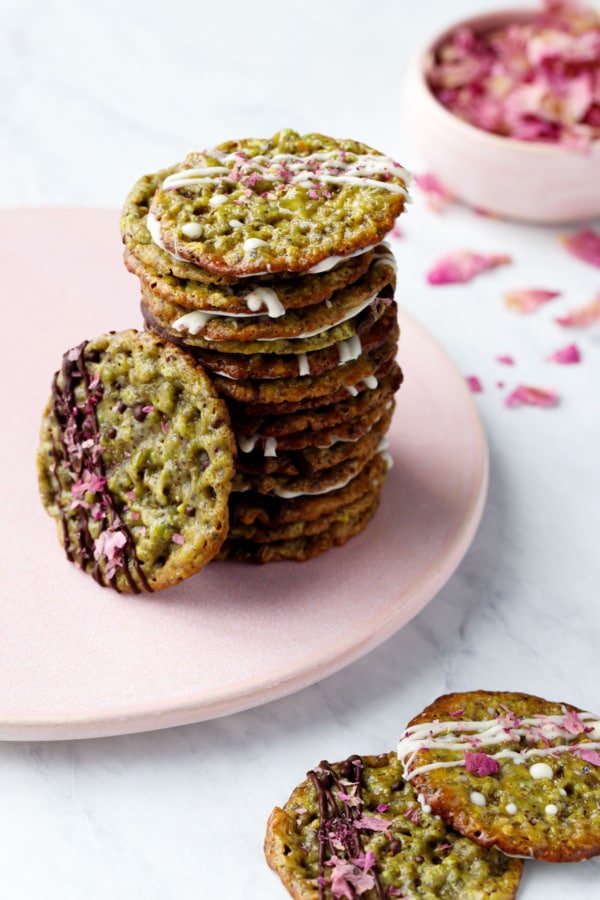
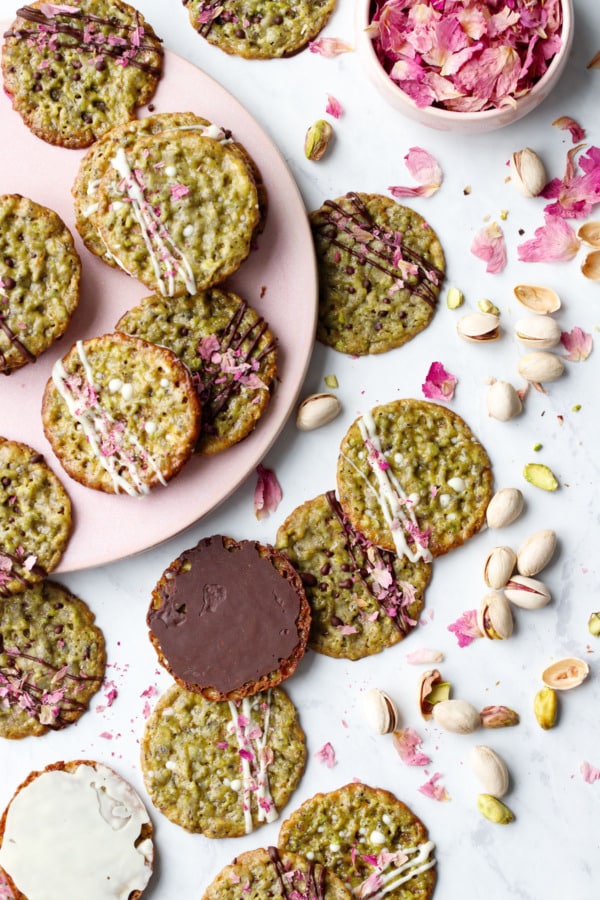
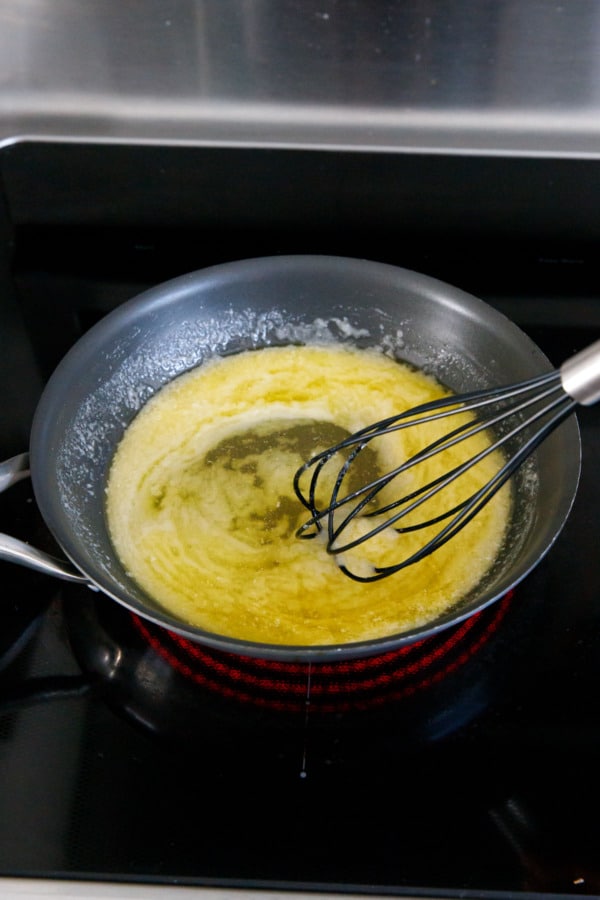
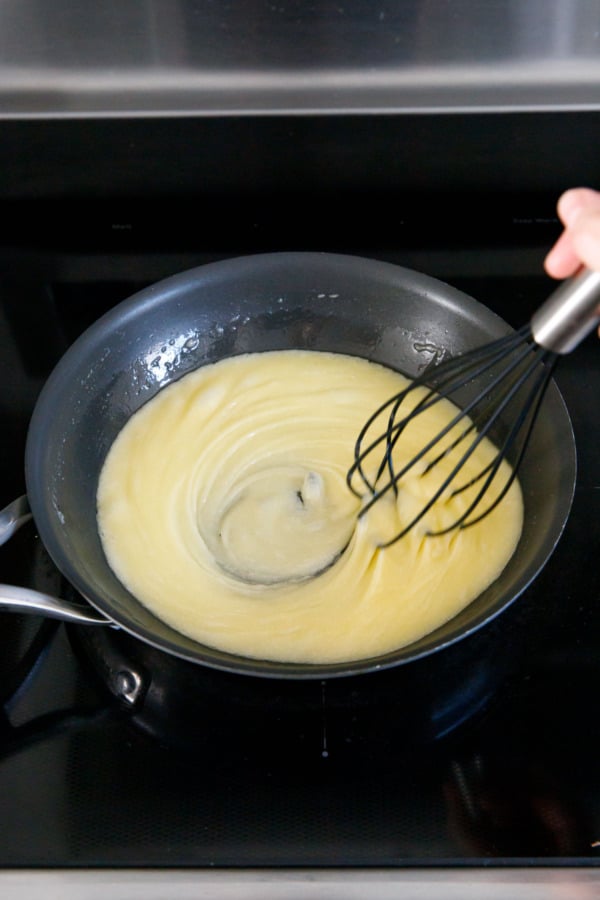
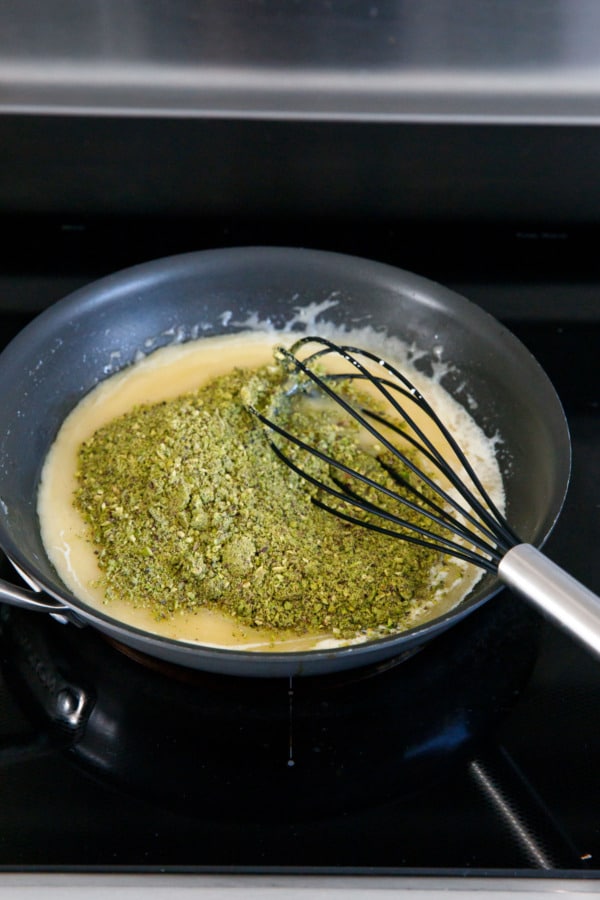
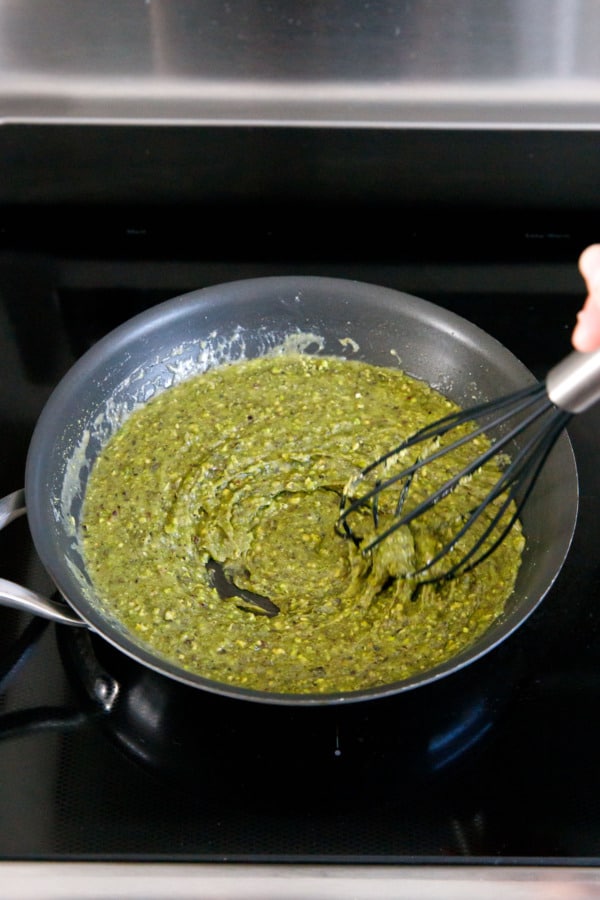
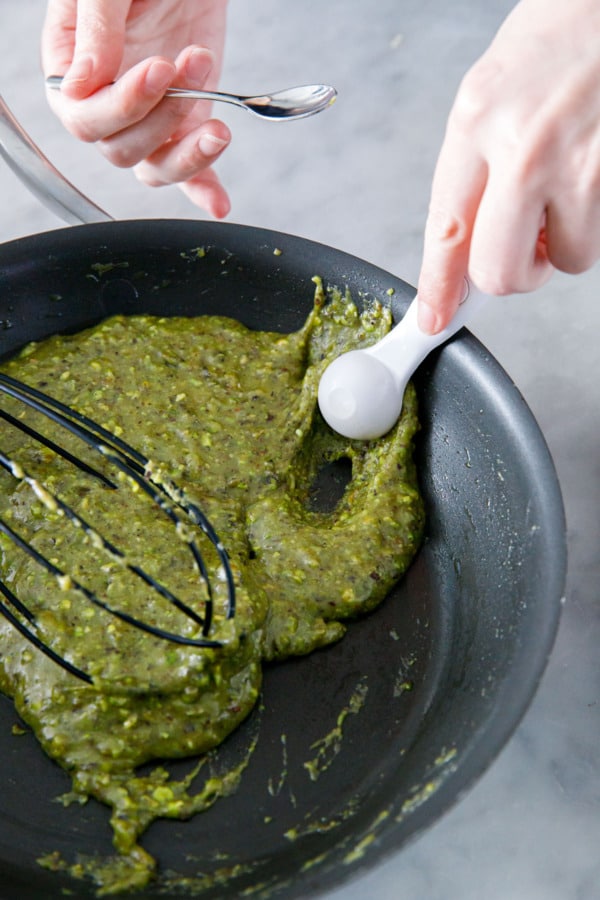
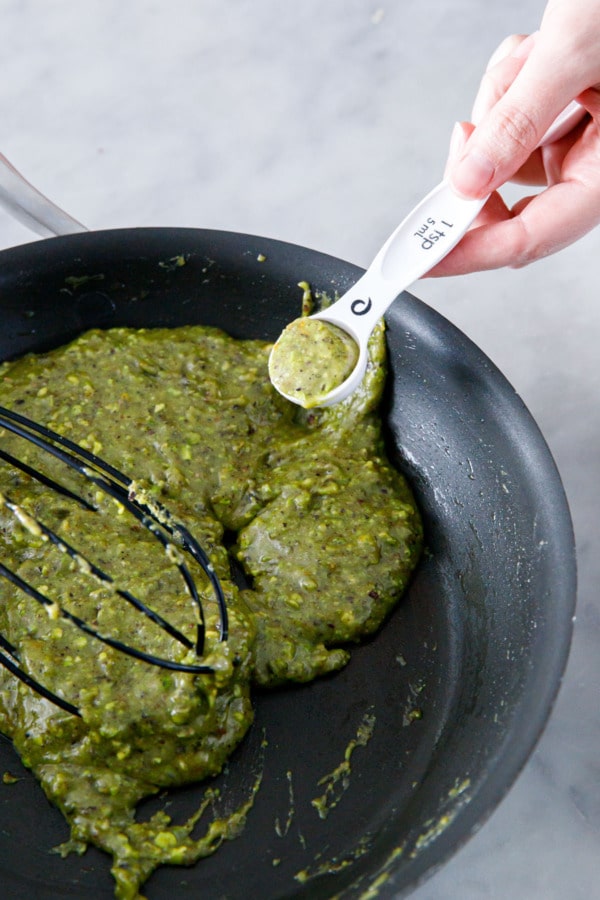
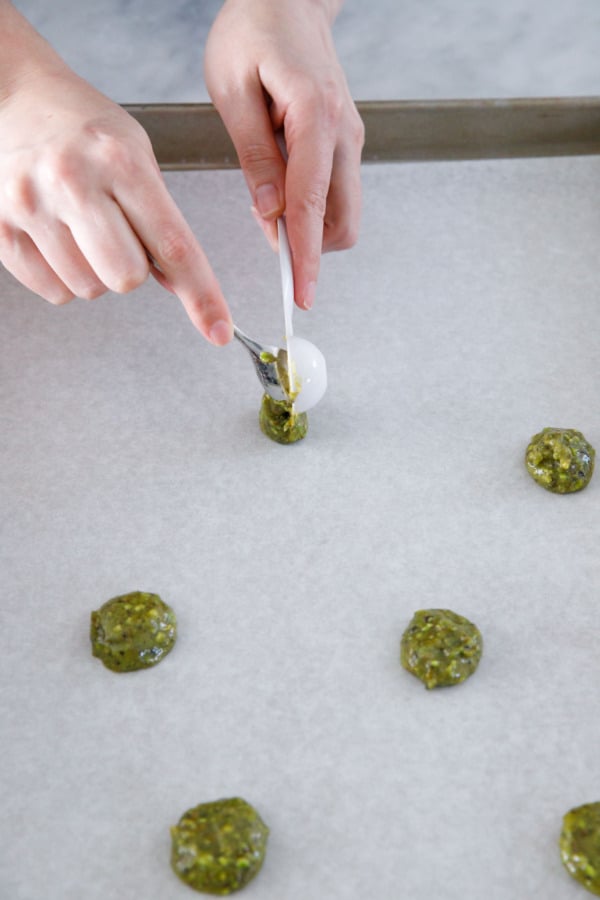
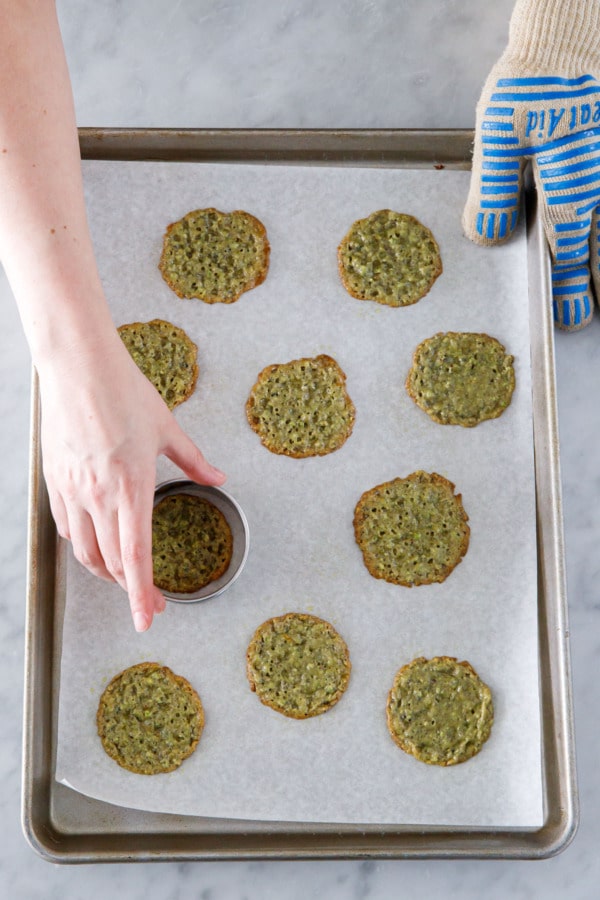
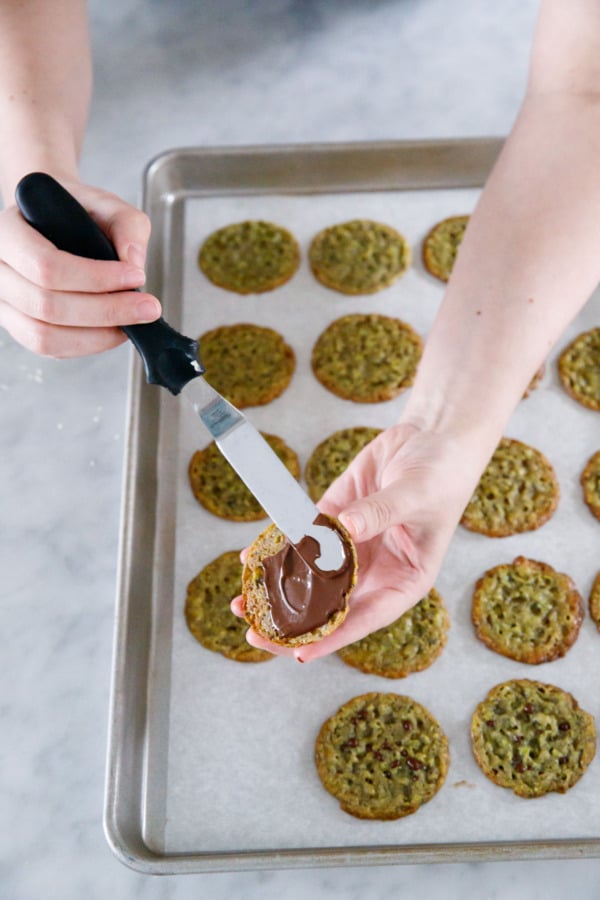
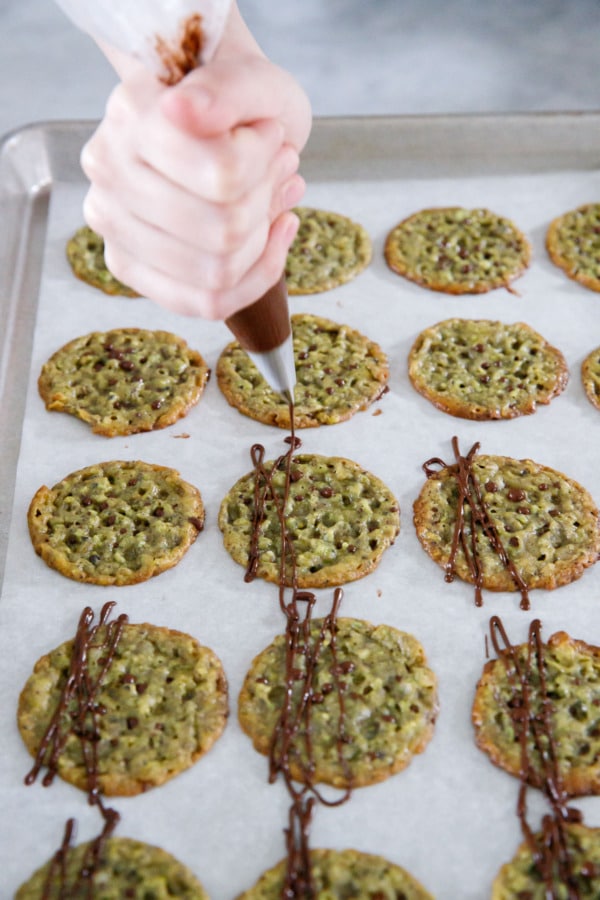
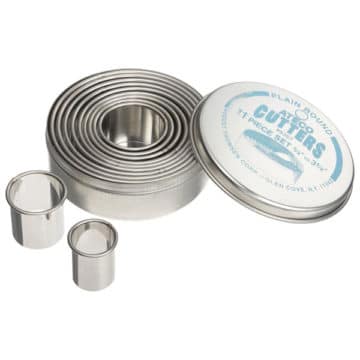
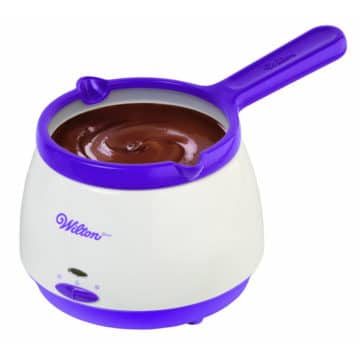
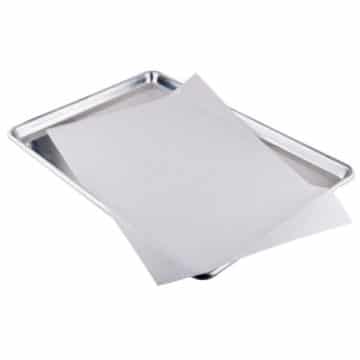
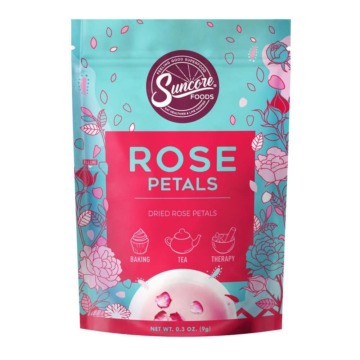
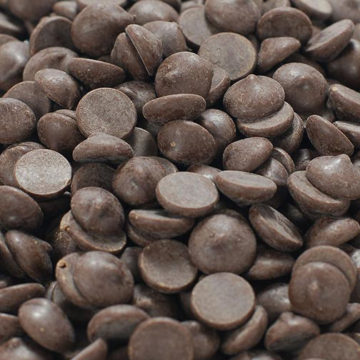
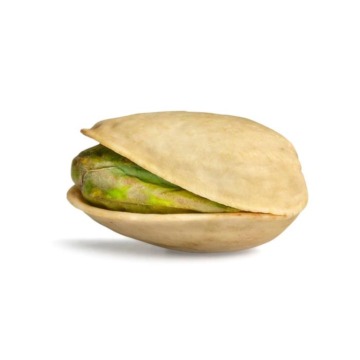
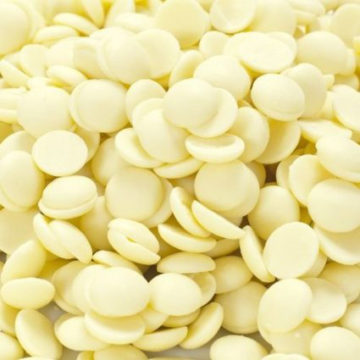
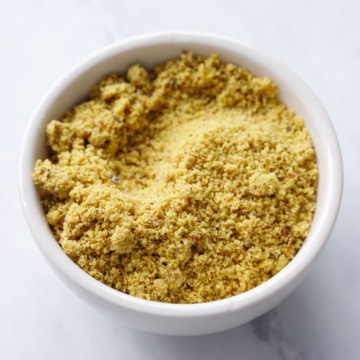
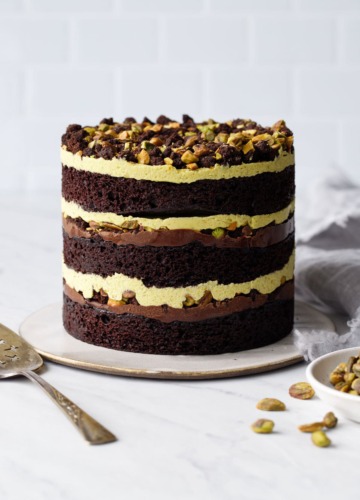
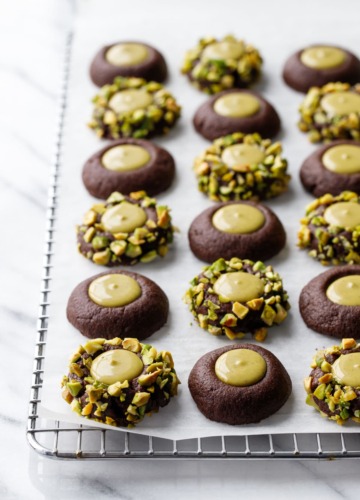
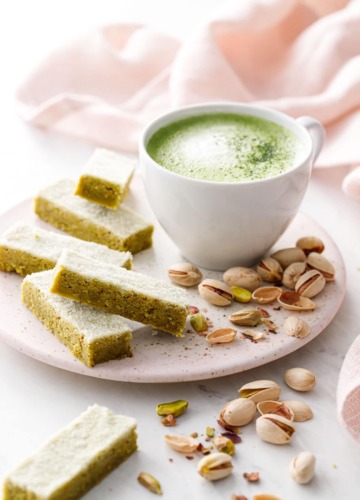
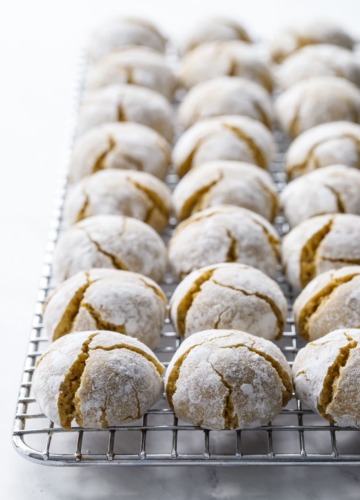
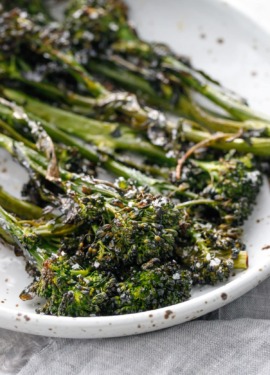
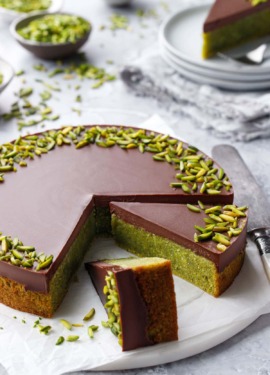
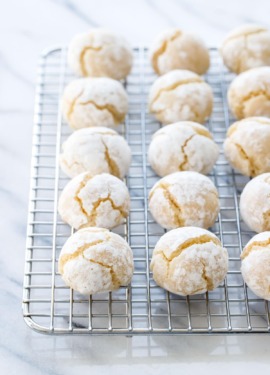
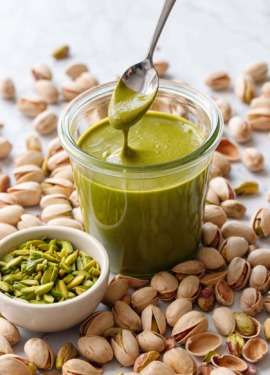
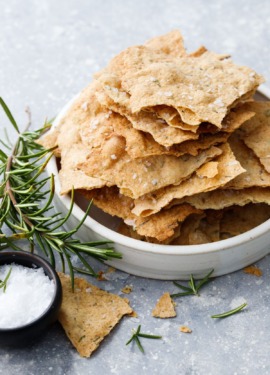
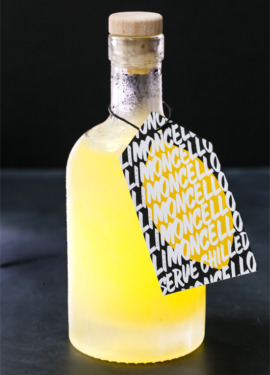
I love lace cookies and these look super similar and extra beautiful with the chocolate drizzle. Going to try these soon!
oh my, how stunning, and rose petals too! and love that they’re made with pistachios, thank you!